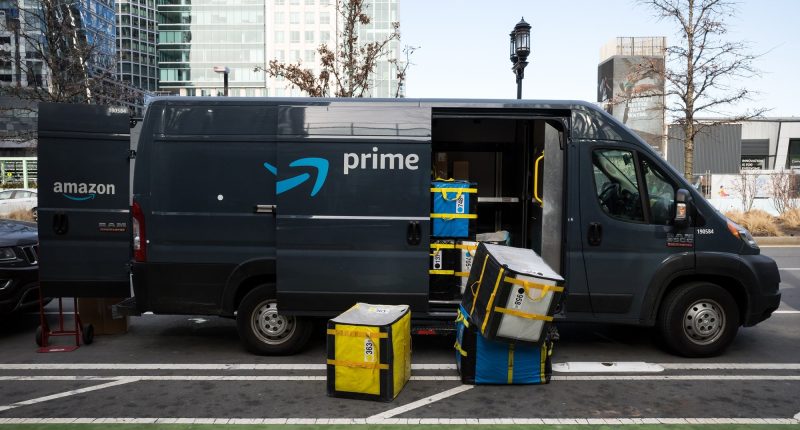
Opinions expressed by Entrepreneur contributors are their own.
Generally, there’s a lull in sales during October. Unless your products relate to Halloween, they aren’t flying off the shelf. The tide rises moving into November, with a swell during Black Friday and Cyber Monday. Buying habits focus on Christmas and holiday gift spending, favoring the end of the quarter. With 2023 holiday retail sales predicted to grow up to 4.6% (less than last year’s 7.6%), Amazon used the power of Prime Day to tackle that pre-Black Friday slump.
The question is: how effective was it?
Prime big deal days
Amazon still seems to be hammering out the details on differentiating the October sales event from their massive Prime Day event in July. Amazon’s Prime sales on Oct. 10 and 11 were called the Prime Big Deal Days. In 2022, when the sales event was first introduced, it was called the Prime Early Access Sale. It seems like Amazon opted for a clearer branding message with “Big Deals” rather than the more tech-sounding “Early Access.” That branding may have paid off.
Customers ordered more than 150 million items compared to 2022’s 100 million items. Purchases this year trended smaller. According to market research firm Numerator, the average order size during Prime Big Deal Days was $53.47, which was less than July’s blowout Prime Day sale but up from October’s Prime Early Access.
Purchases were on the smaller size, ranging from batteries to wellness and beauty products. The toys category was especially popular, with the most new products ranking among the top 10 best sellers. American shoppers weren’t yet looking to open their wallets for large purchases. That doesn’t come as a shock. Most shoppers are waiting for Black Friday and Cyber Monday just around the corner.
Amazon is not the only retailer to use this approach. Plenty of other online retailers had their own early October sales, scooping up purchasing data.
Related: 3 Ways New Amazon Sellers Can Stand Out From the Crowd on Prime Day
The competition
Other retailers have been trying to corner this pre-holiday lull with their own unique sales events. Target seems to be taking a similar approach to Amazon, associating its sales events with its own branded program: Target Circle Week. Target Circle Week first rolled out in September 2022, around the same time as Amazon’s Early Access Sale. Target Circle is a free-to-sign-up, voluntary loyalty program different from the $139 annual Amazon Prime subscription.
The Walmart Holiday Kickoff sales event didn’t lean into the Walmart Plus subscription that they offer at $98 for an annual plan. Walmart’s tactic instead focused more on the gift purchasing that goes on during the holidays. Even still, other retailers’ sales, including Walmart’s, are often discussed in relation to whatever Amazon’s Prime sales event is happening, especially on major news outlets.
Amazon controls the conversation, including when Amazon shares its sales numbers after its events, including Prime Day. Other retailers like Target and Walmart don’t do this. After Prime Big Deal Days, Amazon posted the data on top sellers and the $1 billion saved across millions of deals. No matter the conversation around these pre-holiday sales, all these retailers will compete on the same playing ground for Black Friday and Cyber Monday. Consumers will be comparing prices across all retailers, but Amazon seems to have the leg up.
Related: How to Use Buy with Prime to Benefit Your Brand and Customers
What’s next?
We’ll have to see how Amazon implements what it’s learned from previous Prime sales events into Black Friday, Cyber Monday, and future Prime Days. One instance is in how customers see deals. During the Prime Big Deal Days, Amazon had improved badging for products on sale. A Prime Red Badge, labeled “Prime Big Deal,” appeared under products and category listings to clearly mark the discount offered, making it easier for shoppers to find.
Shoppers could also use Alexa, Amazon’s smart assistant, to track prices through their Alexa-enabled devices like the Echo smart speakers. Prime members can get alerts on eligible products in their Wish List, shopping cart, or Saved For Later queue up to 24 hours before they’re available. Price-conscious shoppers already use price trackers like camelcamelcamel, but integrating this into the Amazon ecosystem makes it less likely for your average shopper to miss out on deals.
On top of all this, there has been the addition of invite-only deals. Introduced in July’s Prime Day, invite-only deals allow Prime members to request an invite to purchase a few limited supply items marked way down. If the Prime member is selected for the deal, they get an email notification to continue with the purchase. More exclusive, invite-only deals may be in the future for Prime Day shoppers.
With the rise of the Prime Early Access Sale and now the Prime Big Deal Days, I would not be surprised to see a third “Prime Day” added to the lineup. With Big Deal Days covering the October slump before the holidays, I could see the next one being sometime around mid-April in Q2. No matter the season, Amazon’s Prime sales events are the boost sellers are looking for.
This article is from Entrepreneur.com









